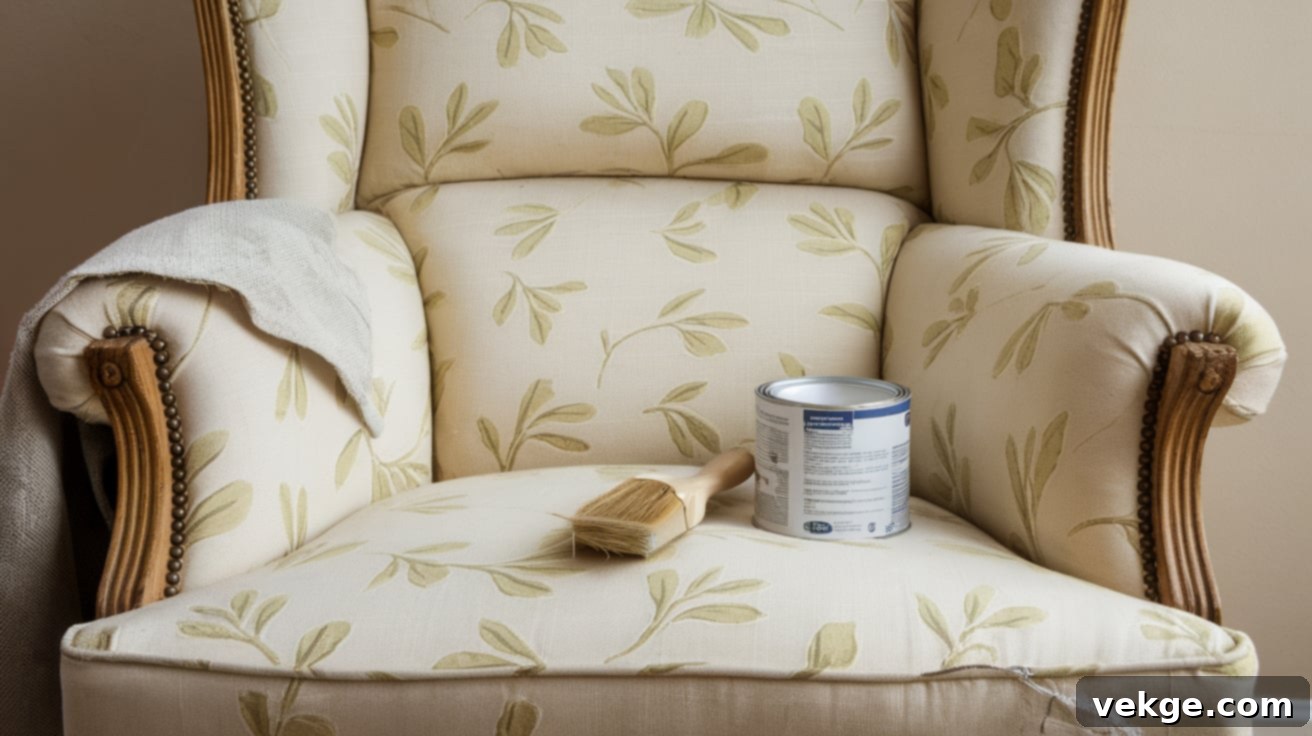Revitalize Your Furniture: The Ultimate Guide to the Best Fabric Paints for Upholstery
Are you gazing at your tired, old couch, dreaming of a fresh new look? I completely understand. Over the years, I’ve transformed countless pieces of furniture, and one of the most effective and budget-friendly methods is painting the upholstery. However, finding the best fabric paints for upholstery that deliver professional results without compromising the fabric’s feel can be a real challenge.
Many common paints tend to crack, fade, or leave fabrics feeling stiff and scratchy, turning your comfortable sofa into an uncomfortable display piece. But don’t worry – my extensive testing has led me to discover exceptional fabric paints designed specifically for upholstery. These innovative paints can breathe new life into your furniture, making it look vibrant and fresh, all while maintaining its natural softness and flexibility.
In this comprehensive guide, I’ll share my top recommendations for fabric paints that I’ve personally tested and trusted for upholstery projects. You’ll gain insights into which paints offer the longest durability, the softest finish, and superior coverage. Get ready to embark on a DIY journey to make your old furniture feel brand new again with the perfect fabric paint, transforming your living space without the hefty cost of replacement.
An Expert Overview of Fabric Paints for Furniture
When I first ventured into the world of painting fabric furniture, I quickly learned that fabric paint is a distinct category, far removed from regular craft or wall paint. It’s meticulously formulated with a unique blend of polymers and pigments designed to bond with textile fibers. This special composition allows the paint to adhere deeply without creating a stiff, brittle surface or flaking off with repeated use, which is crucial for comfortable upholstery.
Understanding the different types of fabric paints available is the first step toward a successful furniture transformation. Each type offers specific advantages, making it suitable for various projects and desired outcomes. Choosing wisely ensures your painted upholstery remains vibrant, soft, and durable for years to come.
Types of Fabric Paint Best Suited for Upholstery Projects
- Permanent Fabric Paint: These paints are engineered to deeply penetrate and stain the fabric fibers, becoming an integral part of the material rather than just sitting on top. This characteristic is why I gravitate towards them most often for high-use furniture like sofas and armchairs. They are celebrated for their ability to maintain the fabric’s original softness and flexibility, preventing the common “crunchy” feel. Once cured, they are incredibly durable and resistant to washing and wear, ensuring your couch truly feels like a couch, not a painted canvas. Look for options that are specifically labeled for upholstery or heavy-duty use.
- Spray Fabric Paint: Ideal for covering large surface areas quickly and evenly, spray fabric paints offer a thin, consistent application. This method helps to preserve the fabric’s natural texture and nap, resulting in a very uniform finish. However, proper ventilation is absolutely essential when using spray paints due to fumes. I find them excellent for achieving a seamless color change on an entire sofa or a set of dining chairs where a smooth, untextured finish is desired. Always use them in a well-ventilated area or outdoors, wearing appropriate respiratory protection.
- Acrylic Fabric Paint (with Textile Medium): While standard acrylic paints can be too stiff for fabric on their own, mixing them with a specialized fabric or textile medium transforms them into viable upholstery paints. This medium significantly improves flexibility, adhesion, and washability. These paints tend to be thicker, offering excellent opacity and making them superb for detailed designs, stenciling, or creating textured effects. I’ve found them particularly effective for pieces that don’t endure constant heavy use, such as accent chairs, decorative benches, or the backs of dining room seats, where their rich, opaque finish can truly shine.
- Natural Fabric Paint: For those prioritizing eco-friendliness and safety, natural fabric paints, often derived from plant-based pigments, are an excellent choice. These paints are typically lower in VOCs (Volatile Organic Compounds), making them safer for indoor use, especially in homes with children or pets. While they might require additional coats to achieve full opacity and their color palette can sometimes be more muted, their gentle formulation and sustainable profile make them a compelling option. They often provide a beautiful, organic look and feel to upholstery.
- Chalk Mineral Paint (for Fabric): While not exclusively a fabric paint, many chalk-style mineral paints can be successfully used on upholstery when properly diluted and sealed. They are renowned for their matte finish and excellent adhesion to various surfaces, including fabric. When applied thinly and in multiple coats, they can penetrate the fibers, providing a soft, durable finish once waxed or sealed. They are fantastic for achieving a vintage or distressed look, adding character to antique or farmhouse-style furniture.
Top-Rated Fabric Paints for Upholstery Based on My Testing
After years of experimenting with various brands and formulations, I’ve narrowed down the field to these exceptional fabric paints that consistently deliver outstanding results for upholstery projects. Each offers unique benefits, ensuring you can find the perfect match for your specific furniture makeover.
1. Fabricoat Fabric Paint
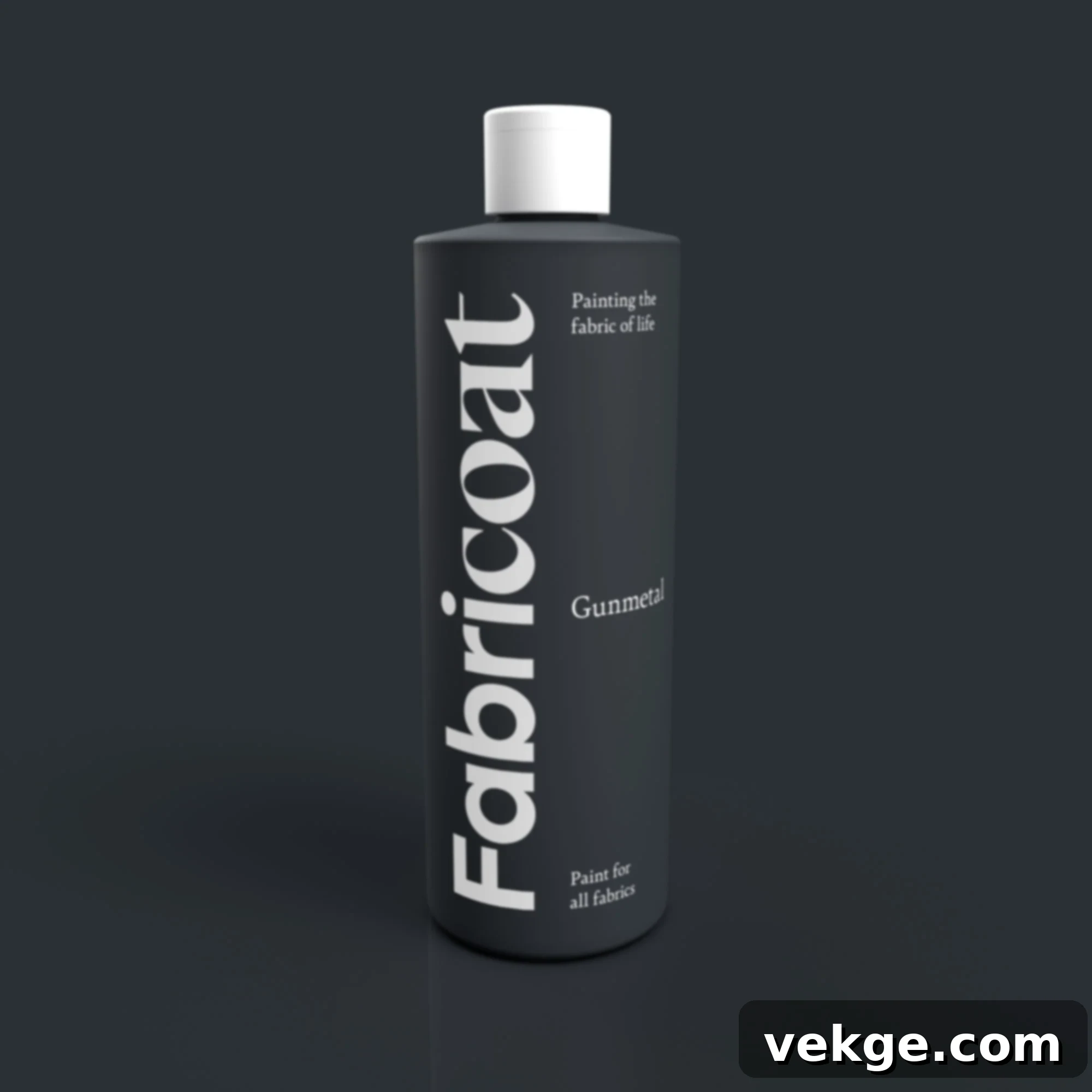
I’ve personally used Fabricoat on several pieces of my own furniture, and its exceptional flow into the fabric fibers is truly impressive. This unique quality allows the paint to become an integral part of the textile, ensuring the paint remains incredibly flexible even after it dries. This flexibility is paramount for maintaining the comfort and plushness of your sofa or armchair, preventing any stiffness or cracking. It truly excels on natural and synthetic blends, particularly cotton and polyester. While I’ve found that two thin, even coats are generally needed for full, opaque coverage, the final result is a remarkably durable finish that withstands years of use and looks fantastic. Its low-VOC formulation also means it’s a safer and more pleasant option for indoor painting projects.
2. Annie Sloan Chalk Paint
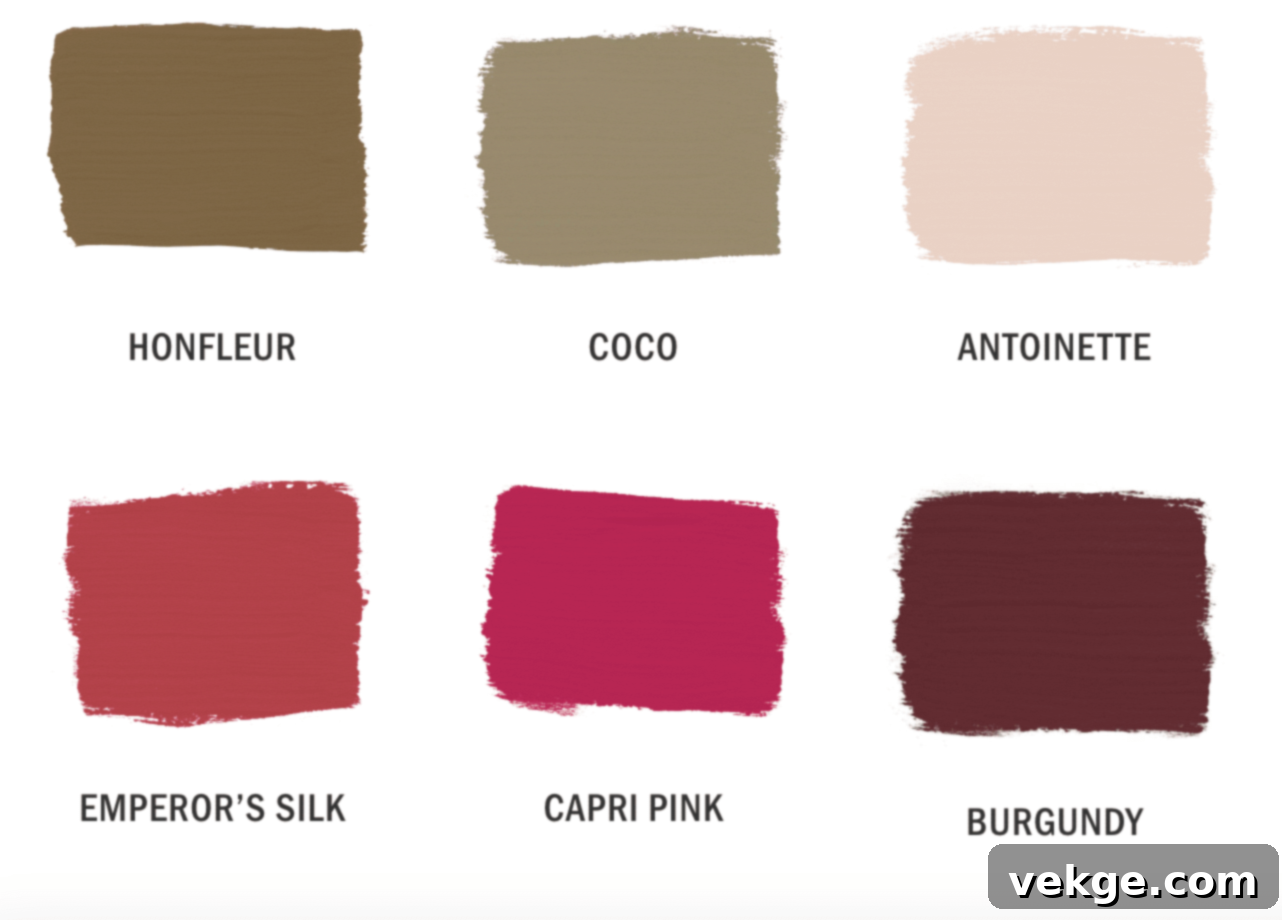
Annie Sloan Chalk Paint is a revered name in furniture restoration, and for good reason. Its ability to bond exceptionally well with natural fibers makes it an outstanding choice for upholstery, especially on antique chairs and sofas. It consistently delivers a beautifully soft, matte finish that enhances the character of vintage pieces and ages gracefully over time. While the paint itself is water-based and comes in recyclable containers, it does require a specialized wax coating after drying. This crucial step not only seals the paint but also significantly extends its durability and protects the finish from daily wear and tear. Each container offers substantial coverage, making it an efficient choice for larger projects.
3. Tulip Soft Fabric Paint
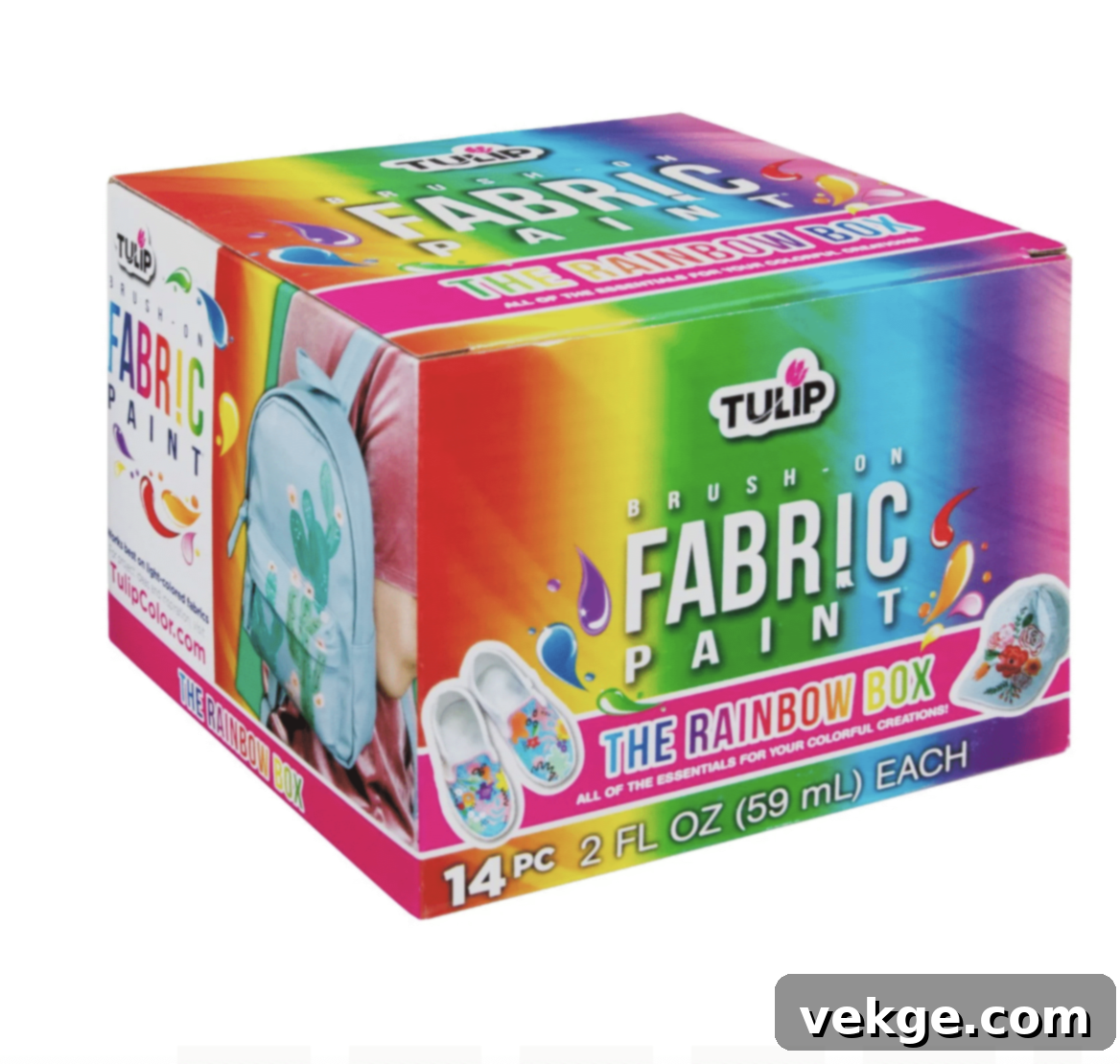
Based on my testing, Tulip Soft Fabric Paint consistently delivers on its promise of a smooth finish that resists cracking, even when the fabric is flexed or stretched. This makes it a fantastic option for frequently used furniture where flexibility is key. It’s incredibly versatile, performing well for both extensive full-coverage projects and intricate detail work. A crucial step for maximizing its longevity is heat setting the paint with an iron after it dries, which permanently bonds it to the fabric. Tulip is also committed to safety and sustainability, producing its paints with non-toxic materials and offering convenient refill options to minimize plastic waste, making it an environmentally conscious choice.
4. Dixie Belle Chalk Mineral Paint
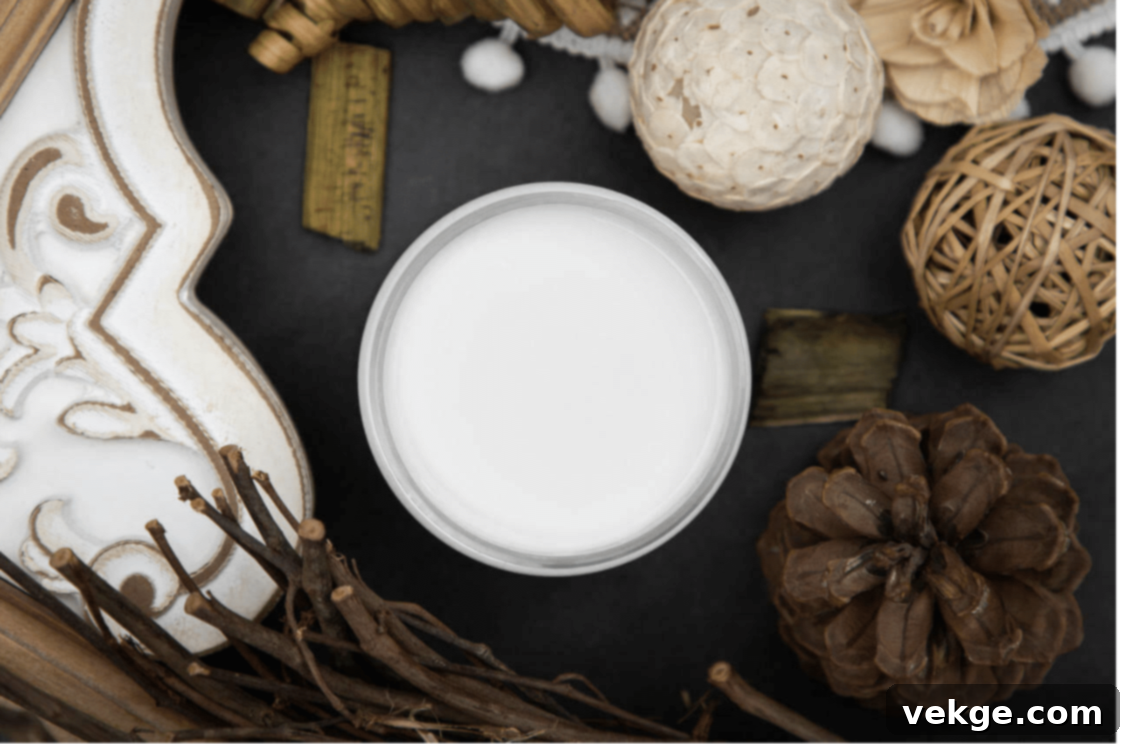
Dixie Belle Chalk Mineral Paint stands out for its exceptional coverage on a wide range of fabrics, making it a reliable option for various upholstery projects. What truly impresses me is its resilience, particularly for outdoor furniture, where it holds up remarkably well against diverse weather conditions. This paint is also a favorite for its quick-drying properties and the fact that it often requires minimal to no prior prep work, saving you valuable time. Crafted in small batches from natural minerals, Dixie Belle products reflect a commitment to reducing waste and offering a more natural alternative, though its texture can feel a bit thicker than other fabric-specific paints.
5. Jacquard Fabric Paint
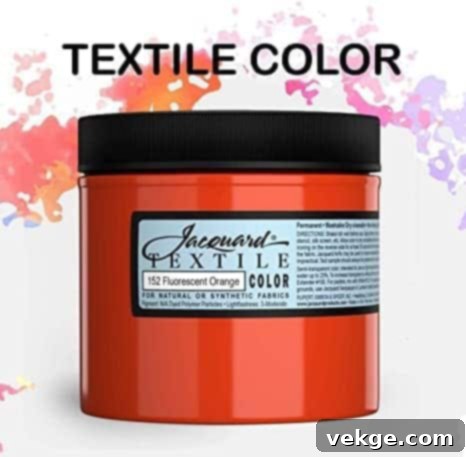
Jacquard Fabric Paint is renowned for its remarkably light texture, which allows it to penetrate fabric without significantly altering its original feel or stiffness. This characteristic is particularly beneficial for upholstery, as it helps to maintain the textile’s natural drape and softness. From my experience, it performs best on lighter-colored fabrics, where its vibrant pigments can truly pop. For those who enjoy customizing their hues, this paint can be easily thinned with water to achieve lighter shades or mixed to create unique colors. Demonstrating a strong commitment to environmental responsibility, the company powers its factory with solar energy and crafts its packaging from post-consumer recycled materials, making it an excellent choice for eco-conscious DIYers.
To help you quickly compare these top-performing fabric paints, here’s a handy table summarizing their key features, costs, and my expert ratings:
Comparison Table of Top Fabric Paints for Upholstery
| Fabric Paint | Cost | Coverage | Drying Time | Pros | Cons | Rating |
|---|---|---|---|---|---|---|
| Fabricoat Fabric Paint | $24 per 16 oz | 125 sq ft | 4 hours | – No priming needed – Stays soft on fabric – Good for large areas – Low-VOC formulation |
– Needs two coats for full opacity – Limited basic color palette |
4.5/5 |
| Annie Sloan Chalk Paint | $38 per 32 oz | 150 sq ft | 1 hour | – Very fast drying – Wide range of rich color options – Strong bond with natural fibers – Recyclable containers |
– Requires a wax finish for durability – Higher price point per ounce |
4.3/5 |
| Tulip Soft Fabric Paint | $15 per 8 oz | 80 sq ft | 2 hours | – Easy to apply evenly – Achieves a smooth, flexible finish – Budget-friendly option – Non-toxic and refillable |
– Requires heat setting with an iron – Smaller bottle size might require more purchases for large projects |
4.2/5 |
| Dixie Belle Chalk Mineral Paint | $30 per 16 oz | 100 sq ft | 2 hours | – Excellent for outdoor furniture due to weather resistance – No sealing typically needed (can seal for extra durability) – Quick drying time – Minimal prep work required |
– Can feel slightly thicker on fabric – Limited primary color range |
4.4/5 |
| Jacquard Fabric Paint | $18 per 8 oz | 75 sq ft | 3 hours | – Maintains light fabric texture – Colors are mixable for custom shades – Great for detailed artistic work – Eco-friendly production and packaging |
– Smaller coverage area per bottle – Often requires multiple thin coats for opacity, especially on dark fabrics |
4.1/5 |
Crucial Factors Affecting Your Upholstery Paint Selection
Choosing the right fabric paint isn’t just about picking a color; it involves a careful consideration of several factors that will directly impact the success, longevity, and feel of your painted furniture. My experience has taught me that overlooking these details can lead to disappointing results. Here’s what I always consider before starting any upholstery painting project:
- Fabric Type: This is arguably the most critical factor. I always start by identifying the exact composition of my furniture’s fabric. Natural fibers like cotton and linen are highly porous and absorb paint beautifully, often requiring less extensive preparation. Synthetic fabrics, such as polyester or microfiber, are less absorbent and may require special textile mediums or specific types of paint (like spray fabric paints) to ensure proper adhesion without stiffness. Delicate fabrics like velvet or silk are notoriously tricky; they demand incredibly thin layers of highly flexible paint to preserve their luxurious feel and nap. Attempting to paint these with thick, inflexible paints can ruin their texture. Always perform a patch test on an inconspicuous area.
- Original Color of Your Fabric: The existing color of your upholstery plays a significant role in determining how many coats of paint you’ll need and the final vibrancy of your chosen color. I learned this the hard way – trying to cover a dark blue sofa with a light cream paint can be an endless, frustrating process requiring many, many coats. For a successful transformation from dark to light, you might need a dedicated fabric primer or an initial layer of white fabric paint. Conversely, light-colored furniture offers greater flexibility, allowing most paint colors to achieve good coverage with fewer coats.
- Usage of the Furniture Piece: How frequently a piece of furniture is used dictates the level of durability and flexibility required from your paint. My busy living room sofa, which endures daily family use, demands a far tougher and more flexible paint than a decorative accent chair in a guest room. High-traffic seats need paints specifically formulated to resist cracking, fading, and peeling under constant friction and pressure. Less-used pieces can tolerate a broader range of paint types, including those that might offer a slightly firmer finish.
- Indoor vs. Outdoor Application: The environment where your furniture will reside is another crucial consideration. For indoor furniture, low-odor and low-VOC paints are paramount for ensuring a safe and comfortable breathing environment. For outdoor pieces, the paint must offer robust UV protection to prevent sun fading and be formulated to withstand moisture, temperature fluctuations, and general weather exposure. While weather-proof paints might have a higher upfront cost, their superior longevity outdoors makes them a worthwhile investment.
- Budget Planning: The cost of fabric paint and associated supplies can add up quickly, especially for larger projects. While a single container might seem inexpensive, painting a three-seater sofa, for example, could require two or more quarts. While cheaper paints are available, they often require more coats for adequate coverage or may demand more frequent touch-ups, potentially costing more in the long run. Investing in higher-quality paints initially can save money, time, and effort by providing better coverage and durability with fewer applications.
- Desired Surface Texture: The inherent texture of your fabric and your desired final feel should guide your paint choice. Smooth fabrics, like tightly woven cotton, benefit from thin, flexible paints to retain their sleek feel. Applying thick paint to such fabrics can make them feel coarse or plastic-like. Rougher fabrics, such as canvas or some tweeds, can often handle slightly thicker paint applications without looking or feeling unnatural, as their texture can mask minor inconsistencies.
- Cleaning Needs and Maintenance: Consider how easily the painted upholstery can be cleaned. If the furniture is in a high-spill zone (think kids or pets), selecting a washable or stain-resistant paint is a wise decision. Some fabric paints can be spot-cleaned with mild soap and water, while others might require specialized cleaners or minimal intervention. Always check the manufacturer’s cleaning recommendations before purchasing and note any special care instructions for your finished piece.
Preparing Your Upholstery for Painting: A Crucial Step-by-Step Guide
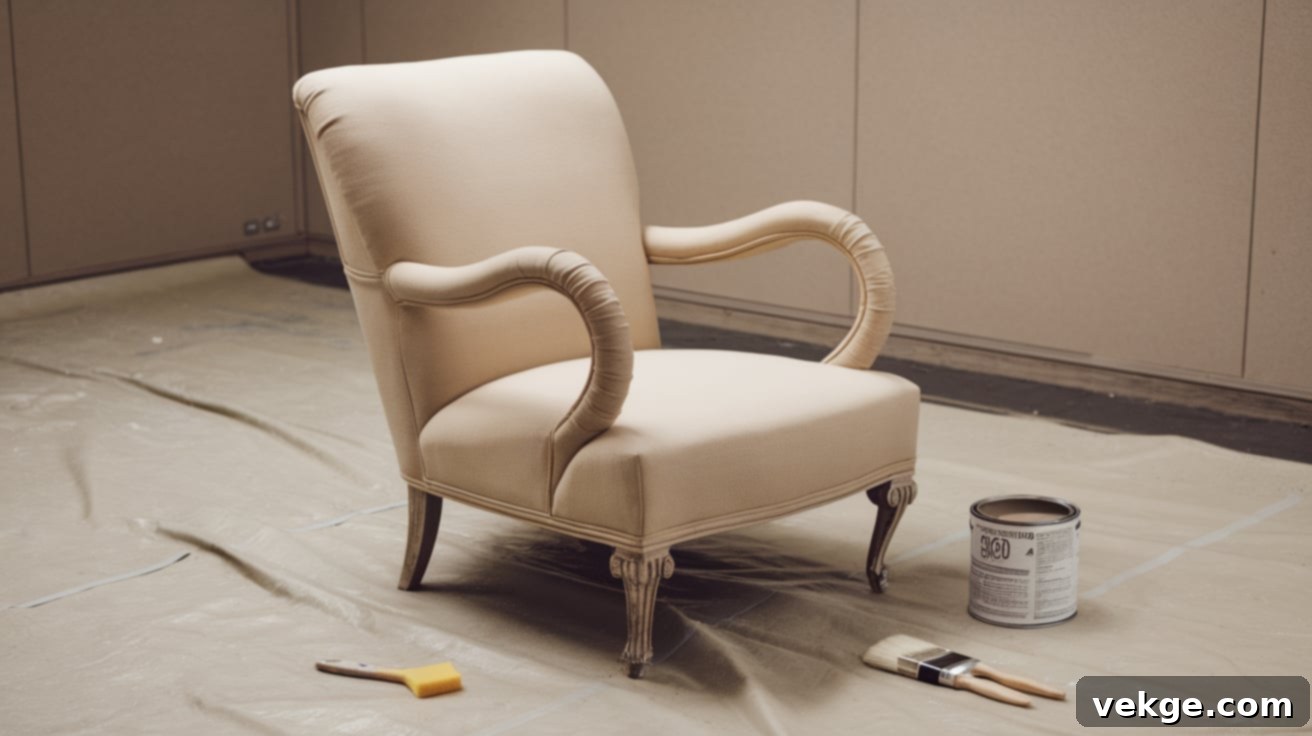
Proper preparation is the cornerstone of any successful painting project, especially when it comes to upholstery. Skimping on these initial steps can lead to uneven coverage, poor adhesion, and a less durable finish. Trust me, the extra time spent here will save you headaches later.
1. Thoroughly Clean the Fabric
Begin by meticulously vacuuming every inch of the fabric. I always use a brush attachment to delve deep into the weave, ensuring all loose dirt, dust, pet hair, and crumbs are thoroughly removed. Next, create a gentle cleaning solution by mixing a small amount of mild liquid soap (like dish soap or an upholstery cleaner) with warm water. Crucially, always test this solution on a hidden spot of the fabric first to ensure it doesn’t cause discoloration or damage. Once deemed safe, lightly dampen a clean, lint-free cloth with the solution and wipe down the entire surface of the upholstery. Be careful not to oversaturate the fabric. Finally, allow the furniture to dry completely—I typically recommend waiting a full 24 hours to ensure every fiber is dry, as any lingering moisture can affect paint adhesion.
2. Perform a Paint Patch Test
Before committing to painting the entire piece, always, always test your chosen fabric paint on an inconspicuous area. This could be underneath a cushion, on the back of the piece, or on an inside seam. Apply a small amount of paint, let it dry fully (following the manufacturer’s recommended drying time), and then assess how it looks, feels, and adheres. This vital step allows you to check the color, texture, and flexibility of the dried paint, preventing potential widespread mistakes and ensuring you’re happy with the outcome.
3. Repair Any Fabric Imperfections
Carefully inspect the upholstery for any loose threads, small tears, or worn spots. Use a sharp pair of scissors to trim any hanging threads flush with the fabric surface. For small holes or tears, use a strong fabric adhesive or a matching thread to carefully patch and repair them. It’s much easier to address these minor issues now than to try and paint over them later, as paint can exacerbate imperfections. Ensure all repairs are completely dry and smooth before proceeding to paint.
4. Protect Your Workspace and Furniture Elements
Painting upholstery can be messy, so meticulous protection is key. Lay down drop cloths generously on the floor around and under the furniture piece. Cover any nearby furniture, walls, or valuable items with plastic sheeting to guard against accidental splatters. Use painter’s tape to carefully mask off any wooden trim, metal legs, decorative studs, or other elements you don’t want painted. If your furniture has removable cushions, always remove them and paint them separately to ensure even coverage on all sides and avoid paint build-up in crevices.
5. Consider the Weather and Ventilation
Environmental factors, particularly humidity, significantly impact how paint dries and cures. I always aim to paint on dry days with low humidity. High humidity can prolong drying times and lead to an uneven or tacky finish. Ensure the painting area has excellent airflow by opening windows and doors. If natural ventilation is insufficient, strategically placed fans can help circulate the air, aiding in even drying and dispersing fumes. Good airflow is not only crucial for paint performance but also for your safety and comfort.
6. Gather All Your Essential Tools
Having all your tools ready before you start will make the process much smoother. You’ll need:
- Clean cloths (several for cleaning and wiping)
- Spray bottle filled with clean water (to dampen fabric)
- High-quality paint brushes (soft bristles work best for even application and preventing streaks)
- Small foam rollers (excellent for smooth, even coverage on larger, flat areas)
- Mixing container (for diluting paint or mixing colors)
- Measuring tape (for calculating coverage or dimensions)
- Fine-grit sandpaper or sanding sponge (for smoothing between coats)
- Protective gloves
- Painter’s tape and drop cloths
Step-by-Step Guide for Painting Upholstery Like a Pro
Now that your furniture is perfectly prepped, it’s time for the exciting part: painting! Follow these detailed steps to achieve a beautiful, soft, and durable finish on your upholstered furniture.
Tools & Materials Required for Painting
- Spray bottle (for water)
- Soft bristle brushes (various sizes for different areas)
- Sanding sponge or fine-grit sandpaper (for smoothing)
- Drop cloths (for floor and surrounding items)
- Clean cloths (for wiping, blotting)
- Paint measuring cups (for accurate dilution)
- Chalk for marking (optional, for designs)
- E6000 glue (if planning to reattach or add decorative elements later)
- Your chosen fabric paint
- Clean water (for dilution and dampening)
- Protective gloves
- Clear sealant (optional, but recommended for added durability, especially for chalk paints)
Detailed Stepwise Process for Painting Upholstery
1. Mix the Paint for Optimal Consistency
- Begin by combining your chosen fabric paint with clean water. A common starting ratio is 3 parts water to 1 part paint, but this can vary depending on the paint’s original thickness and your desired consistency. The goal is a thin, milk-like consistency that will penetrate the fabric fibers rather than sit heavily on top.
- Stir the mixture thoroughly until it is completely blended and smooth, with no lumps or separation.
- Always perform a quick test on a hidden spot or a scrap piece of fabric to ensure the consistency and color are to your liking before applying to the main piece. Adjust the water-to-paint ratio as needed.
2. Prepare and Dampen the Fabric Surface
- Before applying any paint, lightly mist the specific section of fabric you’re about to paint with clean water from your spray bottle. This step is crucial: dampening the fabric helps the paint spread more easily and absorb deeply into the fibers, ensuring a softer finish and better adhesion.
- Work in small, manageable sections to prevent the fabric from drying out before you can apply the paint.
- The fabric should be visibly damp, but not soaked or dripping. An overly wet surface can dilute the paint too much, while a dry surface won’t absorb it properly.
3. Apply the First Thin Coat
- Using your soft bristle brush or foam roller, begin applying the thinned paint mixture to the damp fabric. Work the paint into the fibers with even, light strokes, ensuring it’s pushed down rather than just brushed across the surface. This “working in” motion is key to achieving a lasting, flexible finish.
- For certain paints, especially chalk mineral paints, gently use a sanding sponge while the paint is still wet. This helps to further push the pigment into the fabric and can break down any initial stiffness, contributing to a softer final texture.
- The first coat will likely look patchy and transparent, which is perfectly normal. Focus on even application and thorough penetration, not full coverage at this stage.
4. Proper Drying and Smoothing Between Coats
- Allow each layer of paint to dry completely before applying the next. Rushing this step can lead to uneven drying, stickiness, or cracking. Drying times will vary based on paint type, humidity, and coat thickness, but typically range from 1 to 4 hours.
- Once dry, gently sand the entire painted surface with fine-grit sandpaper or a sanding sponge. This helps to smooth down any rough fibers or stiff areas that might have resulted from the paint, further enhancing the soft feel.
- After sanding, use a clean, dry cloth or a vacuum with a brush attachment to remove all dust and debris before applying the subsequent coat. This ensures a clean surface for optimal adhesion.
5. Apply Additional Coats for Full Coverage
- Repeat the process of dampening the fabric, applying thin coats, drying, and light sanding. Most upholstery projects will require 3-4 thin coats to achieve full, opaque coverage and a rich color.
- Continue to keep the fabric slightly damp before each application, and work the paint into the fabric with circular or crosshatch motions for the best penetration and evenness.
- After each coat, step back and check the coverage. You’ll notice the color deepening and becoming more uniform with each layer. Avoid applying thick coats, as this is the primary cause of stiff, brittle upholstery.
6. Final Curing and Sealing Steps
- Once you’re satisfied with the coverage and color, allow the painted upholstery to dry completely for an extended period, typically 24-72 hours, to allow for full curing. Some paints may require up to 7 days to fully cure and achieve maximum durability.
- If using a chalk-style paint or desiring extra protection, apply a clear sealant such as a fabric protector spray or a furniture wax (for chalk paint) according to the product instructions. This final step significantly enhances durability and protects the finish.
- Gently test the finish by touching it to ensure it feels soft and flexible, not stiff or sticky. Inspect the entire piece for even color and touch up any missed spots with a very thin application of paint.
An Overall Cost Analysis for Painting Upholstery
Painting upholstered furniture is generally a far more economical alternative to reupholstering or purchasing new pieces. However, it’s essential to budget for the necessary supplies. Here’s a breakdown of the typical costs you can expect for a DIY upholstery painting project:
| Category | Item | Cost Range (USD) |
|---|---|---|
| Basic Paint Supplies | Starter set of quality fabric paint (per quart) | $20-35 |
| Estimated paint for a standard three-seater sofa (2-3 quarts) | ~$45-105 | |
| Additional paint for touch-ups or larger/more absorbent pieces | Varies ($10-30) | |
| Essential Tools | Spray bottle | $3-5 |
| High-quality paint brushes (set of 3-5) | $8-15 | |
| Sanding sponges or fine-grit sandpaper pack | $5-10 | |
| Drop cloths (heavy-duty, reusable) | $10-20 | |
| Clean cloths (pack) | $5-10 | |
| Total estimated tools cost | $31-60 | |
| Optional & Enhancing Items | Clear sealant or fabric protector spray | $15-25 |
| Protective gloves (multi-pack) | $5-8 | |
| Paint measuring cups or mixing containers | $4-6 | |
| Fabric medium (if using acrylic paints) | $10-20 | |
| Total estimated optional items | $34-59 | |
| Project Costs by Furniture Size (Estimated Total) | Small accent chair | $50-90 |
| Love seat | $85-150 | |
| Full three-seater sofa | $120-200 | |
| Dining chairs (set of 4) | $90-140 |
These figures are estimates and can fluctuate based on brand choice, sales, and the specific needs of your project. Remember, investing a little more in quality paint and tools often leads to a more professional and long-lasting finish.
How to Maintain Your Painted Upholstery for Lasting Beauty
Once you’ve poured your effort into transforming your upholstered furniture with paint, proper maintenance is key to preserving its beauty and durability for years to come. These are my go-to strategies for keeping painted upholstery looking fresh:
- Consistent Daily Care: I always keep a soft-bristled brush or a lint roller handy for quick, light cleaning. Dust the surface of your painted furniture at least once a week to prevent dirt and debris from settling into the fabric fibers. In the event of spills, act immediately: gently pat the area with a clean, dry, absorbent cloth. Never rub vigorously, as this can lift or damage the paint and potentially spread the stain. If you have pets, encourage them not to scratch or excessively rub against the painted areas, as their claws can compromise the paint finish.
- Gentle Cleaning Methods for Stains: For more stubborn spots, create a mild cleaning solution using a small amount of gentle soap (like baby shampoo or a non-detergent cleaner) mixed with cool water. As always, test this solution on an inconspicuous spot first. Blot stains gently with a clean cloth dampened with the solution – avoid harsh scrubbing motions, which can abrade the paint. Once the stain is lifted, blot the area with a clean, water-dampened cloth to rinse, then pat dry. Allow the cleaned spot to air dry completely. Crucially, never use harsh chemicals, bleach, or abrasive cleaners, as they can strip the paint or cause discoloration.
- Mindful Vacuuming Techniques: When vacuuming painted upholstery, I recommend using only a brush attachment and ensuring the suction power is set to low. High suction or harsh attachments can pull at the fabric fibers and potentially damage the paint. Always move the vacuum attachment with the grain of the fabric, not against it, to protect the finish and maintain its texture. Before you start, make sure the vacuum head is clean to prevent transferring any dirt or oils. Avoid using power “beater bars” found on many upright vacuums, as they are far too aggressive for painted fabric.
- Protection from Sunlight Exposure: Direct and prolonged exposure to sunlight is one of the biggest enemies of painted upholstery. UV rays can cause paint to fade, become brittle, or even crack over time. Position your painted furniture away from windows that receive intense, direct sun. Utilize curtains, blinds, or window films during peak daylight hours to filter harmful UV rays. Periodically rotating or moving your furniture can also help ensure even exposure and prevent localized fading.
- Seasonal Care and Vigilance: Make it a habit to inspect your painted upholstery every few months for any signs of wear, such as small chips, faded spots, or minor cracks. Addressing these small issues promptly prevents them from escalating into larger problems. In high-use seasons or during periods of high humidity, you might consider more frequent cleaning or adding an extra layer of fabric protector. Keep indoor heating vents away from painted surfaces, as excessive dry heat can also contribute to paint cracking.
- Strategic Spot Touch-Ups: Always keep a small amount of your leftover paint, along with your original mixing recipe, for future touch-ups. This ensures a perfect color match. Before attempting a touch-up, clean the affected spot thoroughly and allow it to dry. Apply a very thin layer of paint, carefully blending it with the surrounding area. Let touch-ups dry fully before using the furniture again.
Prevention Tips to Extend the Life of Your Painted Upholstery:
- Utilize arm covers or decorative throws on heavily used areas, like armrests or headrests, to minimize direct wear.
- Place felt pads or coasters under heavy decorative items to prevent indentations or scratches on painted surfaces.
- Enforce a “no food or drink” rule on your newly painted furniture, or at least encourage extreme caution.
- Kindly inform guests that the furniture has been painted, especially if the finish is delicate or requires specific care.
- Stay vigilant for any early signs of wear and address them proactively to maintain the integrity of your furniture.

Conclusion: Empowering Your Furniture Makeover Journey
You are now fully equipped and ready to embark on your exciting upholstered furniture painting project! I’ve shared all the essential knowledge I’ve gathered from years of hands-on experience, testing countless paints and refining various application methods. Remember, the key to a successful and satisfying furniture transformation lies in a few critical areas:
- Selecting the Right Paint: Carefully choose a fabric paint that is specifically suited for your fabric type, the furniture’s intended use, and your desired aesthetic.
- Thorough Preparation: Never underestimate the importance of cleaning, repairing, and protecting your furniture and workspace. These steps lay the foundation for a flawless and long-lasting finish.
- Patience with Application: Apply paint in thin, even coats, allowing ample drying time between each layer. This ensures the paint penetrates the fibers, maintains flexibility, and prevents stiffness or cracking.
- Mindful Maintenance: Commit to gentle, consistent care of your newly painted upholstery to preserve its vibrancy, softness, and durability for many years to come.
While a high-quality fabric paint might seem like a greater upfront investment, its superior coverage, flexibility, and longevity will ultimately save you time and money by reducing the need for frequent touch-ups or complete re-dos. By following the guidance in this article, you’ll not only achieve a stunning furniture makeover but also gain the satisfaction of a successful DIY project that truly elevates your home decor.
Do you want to explore more innovative furniture tips and DIY home improvement ideas? Check out my comprehensive guide on choosing the best fabric for different furniture types to further enhance your interior design knowledge. Or, if you’ve recently completed an upholstery painting project, I’d love to hear about your experiences! Share what worked (or didn’t work) for you in the comments section below – your insights can help inspire and guide fellow DIY enthusiasts!
